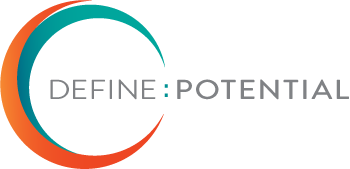Define Potential Blog
Do you have trapped or devoted employees?
12 April 2018

Organisational commitment is one of the most poorly understood aspects of human resource management and yet, it has a direct and powerful impact on employee performance.
Where once, HR professionals assumed that people were or were not committed to their employer and that commitment would always bring positive results, we now know better. Everyone is committed and the results are not always beneficial.
Commitment is complex. Some people are highly committed and are high performers. While others are highly committed and poor performers. Clearly, organisations are looking for staff who commit and perform well. But how do you know that you’re on the right track?
Well, there are three states of commitment you can explore:
- Affective commitment- where an employee has an emotional or values-based connection to the organisation and ‘wants’ to work there;
- Normative commitment- where an employee feels loyalty and obligation, that they ‘ought to’ work for an organisation; and
- Continuance commitment- where the perceived costs of leaving the organisation are too high and the employee feels they ‘need to’ stay, or where the employee feels that they have few alterative employment options.
Most people experience a combination of these states and form a commitment profile, which can change throughout an employee’s career depending on their circumstances.
When people experience both affective and continuous commitment, that is, they work where they do because they have to work to pay the bills and because they want to work where they do because they believe in the value of the work, they have what we call a devoted commitment profile. This results in high retention and high performance.
When people feel only continuous commitment, that is, they work where they do because they need to and have few alternative positions available to them or feel that there is too much to lose to change jobs, they have a trapped profile and this is problematic. This means that they are more likely to stay with the organisation but less likely to perform well, or at least, to their best abilities.
Dr Samantha Johnson of UNSW Canberra’s Public Service Research Group, explored organisational commitment in the APS and looked at the unique commitment profiles that have developed. She found that the dominant profile is, in fact, a trapped profile. This is not unique to our public service. It’s a common problem across the world and a consequence of the generosity of public sector employment conditions. But it’s a problem if it’s not understood and managed as it can result in lower performance.
In her work, Dr Johnson found that lower performance can occur when employees are placed in jobs they don’t choose. Often, productivity requirements result in people being moved from one position to another without any say in a role change. When this occurs, performance can be compromised, despite the individual being capable of doing the job and holding a positive mindset about work or a strong work ethic. For all individuals, being in a role of choice where one can apply their skills and capabilities and where they are passionate about the work, is the best combination to result in both high retention and high performance.
Of course, it’s not always possible to give all employees the role of their choice. However, organisations can support employees and enhance both retention and performance by following the below steps:
- Encouraging individuals to select the branch or area they would like to work in;
- Discussing the importance and purpose of their work in delivering the organisation’s vision and mission;
- Giving them options for continuing their formal education;
- Developing an individual development plan for them to take control of their ongoing development and build their commitment;
- Encouraging managers to develop strong team relations to build loyalty across a team and thus promote normative commitment;
- Linking the values and purpose of the team, section, branch to those of the individual to enhance affective commitment;
- Discouraging career planning based on pay scales and encouraging career planning based on personal values and making a difference.
Everyone can enhance retention and performance in an organisation by reducing cynicism and negativity. Promoting the value of work and encouraging people to tap into their passion and personal values will also build a healthy form of commitment.
A career based on a passion for work and making a difference, on blending capability with values and personal interests and avoiding a career plan based on hierarchy alone, will enhance retention and performance across the board.
A devoted profile, where going to work is about making a living and being professionally fulfilled will enhance retention and performance and eradicate that well known virus known as Mondayitis!
References
Johnson, S.J., 2016. Recruiting for Commitment and Performance, Human Capital Management Research: Influencing Practice and Process, Information Age, USA
Blog posts you might like
A moment to reflect, and move forward
People tend to put a lot of pressure on themselves at this time of year to get things done – finish that report, wind up the project, clean the windows, buy all the gifts, attend all the Christmas parties and prepare for the perfect holiday season. It is worth assessing every item on all our lists – both mental and actual, and ask ourselves “does this all need to be done?”
Refresh, Re-energise and Renew
With the chaos of 2021 behind us, I think everyone is looking forward to the holiday break. Time with family, friends, and some much-needed relaxation. The past two years have been tough on many people. The surprising part is that some leaders have thrived through this period while others have really struggled.
Communicating in the digital era
While we either have or are contemplating a return to our offices, digital communication, whether that be email, messaging, Zoom or MS Teams is here to stay. Being effective in how we use these different communication tools will be critical to high performance and team management.





